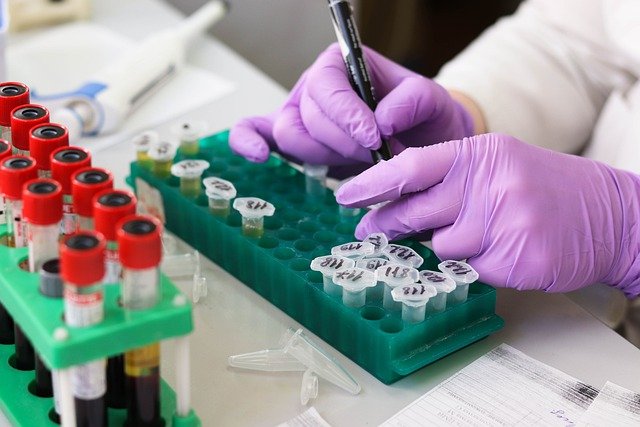中国香港、上海和美国新泽西州:2023年1月18日(星期三):和黄医药(中国)有限公司(简称“和黄医药”或“HUTCHMED”)(纳斯达克/伦敦证交所:HCM;香港交易所:13)今天宣布,经过与中国国家医疗保障局(“国家医保局”)的医保谈判,沃瑞沙®(赛沃替尼)获纳入新版《国家基本医疗保险、工伤保险和生育保险药品目录》(“医保药品目录”),用于治疗含铂化疗后疾病进展或不耐受标准含铂化疗的间质上皮转化因子(“MET”) 外显子 14 跳变的局部晚期或转移性非小细胞肺癌(NSCLC)成人患者。新版医保药品目录将自2023年3月1日起生效。 沃瑞沙®于2021年6月在中国获附条件批准,用于治疗特定的MET外显子14跳跃突变的非小细胞肺癌患者。 关于医保药品目录
近年来,中国政府高度重视减轻人民群众用药负担问题。国家医保局目前定期召集一个广泛的专家网络,包括医学专家、药学专家和药物经济学专家等,对创新药物准入医保药品目录进行更新和调整。因此乙类药物的报销范围迅速扩大,其中越来越多地包括新型抗肿瘤药物。乙类药物的报销要求患者根据其居住省份或参加的医疗保险类型,支付不同比例的自付额。所有包括的药物的协议通常每两年更新一次。
关于赛沃替尼
赛沃替尼是一种强效、高选择性的口服MET TKI,在晚期实体瘤中表现出临床活性。赛沃替尼可阻断因突变(例如外显子14跳跃突变或其他点突变)、基因扩增或蛋白质过表达而导致的MET受体酪氨酸激酶信号通路的异常激活。
关于非小细胞肺癌及MET异常
MET是一种受体酪氨酸激酶,在细胞的正常发育过程中发挥重要作用。[7] MET扩增或过表达可导致肿瘤生长以及癌细胞的转移进展,且是EGFR突变的转移性非小细胞肺癌患者对EGFR TKI治疗产生获得性耐药的主要机制之一。[7-8] 约有2%-3%的患者伴有MET外显子14跳跃突变,这是一种特定的基因突变。[9] 在奥希替尼治疗后出现疾病进展的患者中,MET异常的发生率为15-50%。[10-14] MET扩增和过表达的发生率可能因样品类型、检测方法和使用的测定阈值而异。[15]
关于阿斯利康在肺癌领域的研究
阿斯利康正致力于通过早诊早治提高肺癌患者的治愈率,同时推动相关技术不断向前发展,以改善产生耐药性和处于晚期情况下的患者的治疗结果。通过制定新的治疗目标和研究创新疗法,阿斯利康致力于实现用药患者受益最大化的目标。
关于阿斯利康肿瘤领域的研究
阿斯利康正引领着肿瘤领域的一场革命,致力提供多元化的肿瘤治疗方案,以科学探索肿瘤领域的复杂性,发现、研发并向患者提供改变生命的药物。
关于阿斯利康
参考资料:
-
World Health Organization. International Agency for Research on Cancer. All cancers fact sheet. Available at: https://gco.iarc.fr/today/data/factsheets/cancers/39-All-cancers-fact-sheet.pdf. Accessed November 2022.
-
American Cancer Society. What is Lung Cancer? Available at: https://www.cancer.org/cancer/lung-cancer/about/what-is.html. Accessed November 2022.
-
Knight SB, et al. Progress and prospects of early detection in lung cancer. Open Biol. 2017;7(9): 170070.
-
Keedy VL, et al. American Society of Clinical Oncology Provisional Clinical Opinion: Epidermal Growth Factor Receptor (EGFR) Mutation Testing for Patients with Advanced Non-Small-Cell Lung Cancer Considering First-Line EGFR Tyrosine Kinase Inhibitor Therapy. J Clin Oncol. 2011:29;2121-27.
-
Zhang Y, et al. The prevalence of EGFR mutation in patients with non-small cell lung cancer: a systematic review and meta-analysis. Oncotarget. 2016;7(48).
-
Szumera-Cie?kiewicz A, et al.?EGFR Mutation Testing on Cytological and Histological Samples in 11. Non-Small Cell Lung Cancer: a Polish, Single Institution Study and Systematic Review of European Incidence.?Int J Clin Exp Pathol. 2013:6;2800-12.?
-
Uchikawa E, et al. Structural basis of the activation of c-MET receptor. Nat Commun. 2021;12(4074).
-
Wang Q, et al. MET inhibitors for targeted therapy of EGFR TKI-resistant lung cancer. Journal of Hematology & Oncology. 2019;63.
-
Vuong HG, et al. Clinicopathological implications of MET exon 14 mutations in non-small cell lung cancer – A systematic review and meta-analysis. Lung Cancer 2018; 123: 76-82. doi: 10.1016/j.lungcan.2018.07.006.
-
Soria JC, et al. Osimertinib in Untreated EGFR-Mutated Advanced Non-Small-Cell Lung Cancer. N Engl J Med. 2018;378(2):113-125. doi:10.1056/NEJMoa1713137.
-
Mok TS, et al. Osimertinib or Platinum-Pemetrexed in EGFR T790M-Positive Lung Cancer. N Engl J Med. 2017;376(7):629-640. doi:10.1056/NEJMoa1612674.
-
Hartmaier R, et al. Tumor genomics in patients (pts) with advanced epidermal growth factor receptor mutant (EGFRm) non-small cell lung cancer (NSCLC) whose disease has progressed on first-line (1L) osimertinib therapy in the Phase II ORCHARD study [abstract]. In: Proceedings of the American Association for Cancer Research Annual Meeting 2022; Abstract nr LB078 / 3.
-
Piotrowska, et al. MET amplification (amp) as a resistance mechanism to osimertinib. Journal of Clinical Oncology 2017 35:15_suppl, 9020-9020
-
Hartmaier, et al. Detection of MET-mediated EGFR tyrosine kinase inhibitor (TKI) resistance in advanced non-small cell lung cancer (NSCLC): biomarker analysis of the TATTON study. Cancer Res (2019) 79 (13_Supplement): 4897.doi: 10.1158/1538-7445.AM2019-4897.
-
Coleman N, et al. Beyond epidermal growth factor receptor: MET amplification as a general resistance driver to targeted therapy in oncogene-driven non-small-cell lung cancer. ESMO Open. 2019;6(6).





























